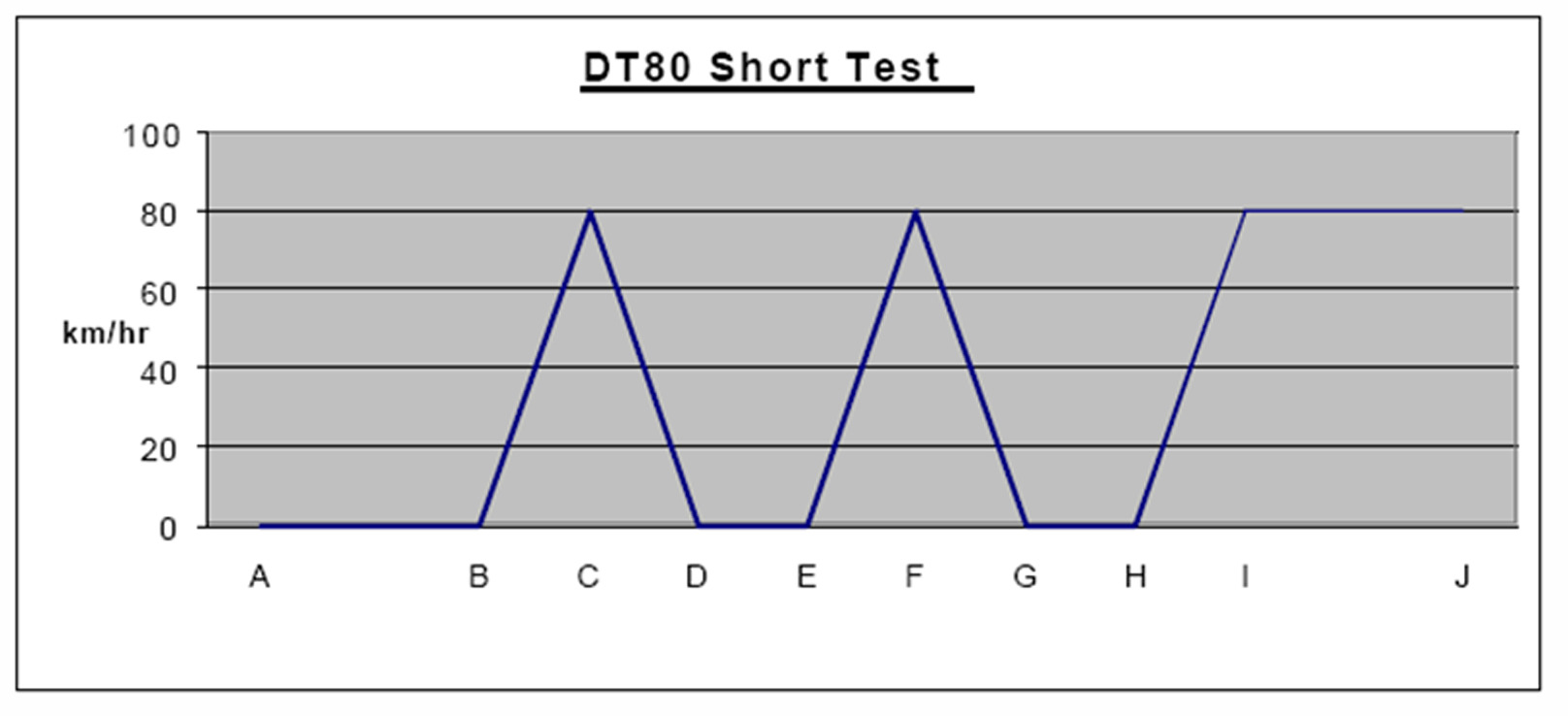 South Australian Numbered Regulations
South Australian Numbered Regulations South Australian Numbered Regulations
South Australian Numbered RegulationsFor the purposes of rule 131(4), the procedure for testing is as follows:
|
Step 1 |
Secure the vehicle on the dynamometer. |
|
Step 2 |
Set the dynamometer to simulate the correct load and inertia for the vehicle. |
|
Step 3 |
Start sampling. |
|
Step 4 |
Idle for 60 seconds. |
|
Step 5 |
Accelerate rapidly to 80 km/h under simulated inertia, using wide open throttle, making gear changes as needed for smooth acceleration. |
|
Step 6 |
Decelerate by removing all pressure from the accelerator pedal, disengaging the gears and gently applying brakes to bring the vehicle to a standstill. |
|
Step 7 |
Idle for 10 seconds. |
|
Step 8 |
Accelerate rapidly to 80 km/h under simulated inertia, using wide open throttle, making gear changes as needed for smooth acceleration. |
|
Step 9 |
Decelerate by removing all pressure from the accelerator pedal, disengaging the gears and gently applying brakes to bring the vehicle to a standstill. |
|
Step 10 |
Idle for 10 seconds. |
|
Step 11 |
Accelerate rapidly to 80 km/h under simulated inertia, using wide open throttle, making gear changes as needed for smooth acceleration. |
|
Step 12 |
Keep speed at 80 km/h for 60 seconds, then stop sampling and bring the vehicle to rest. |
Note—
Explanation of the test procedure
This test has been designed to evaluate vehicle emissions during typical ‘real-world’ operating modes and conditions. There are 3 simple modes—
(a) 3 idle periods;
(b) acceleration to 80 km/h 3 times;
(c) keep speed at 80 km/h.
The graph below shows the modes of operation. The actual test will result in a graph that has more variation than the graph below, because of the need to change gears when accelerating. Modes B – D and E – G and H – I have no specific time interval. All the specified time periods have an error margin of ± 1 second.
The vehicle is accelerated rapidly to 80 km/h 3 times by applying wide open throttle.
The driver selects the most appropriate gear change points for the vehicle being tested to achieve the correct speed.
The vehicle’s rolling resistance (based on tyre and bearing losses, frontal area and drag coefficient) must also be calculated and continuously factored into the dynamometer tractive effort calculations to ensure correct loading.
Empirical algorithms, based on vehicle test mass, GVM or other known parameters, may be used to automatically calculate realistic coefficients for the variables.
